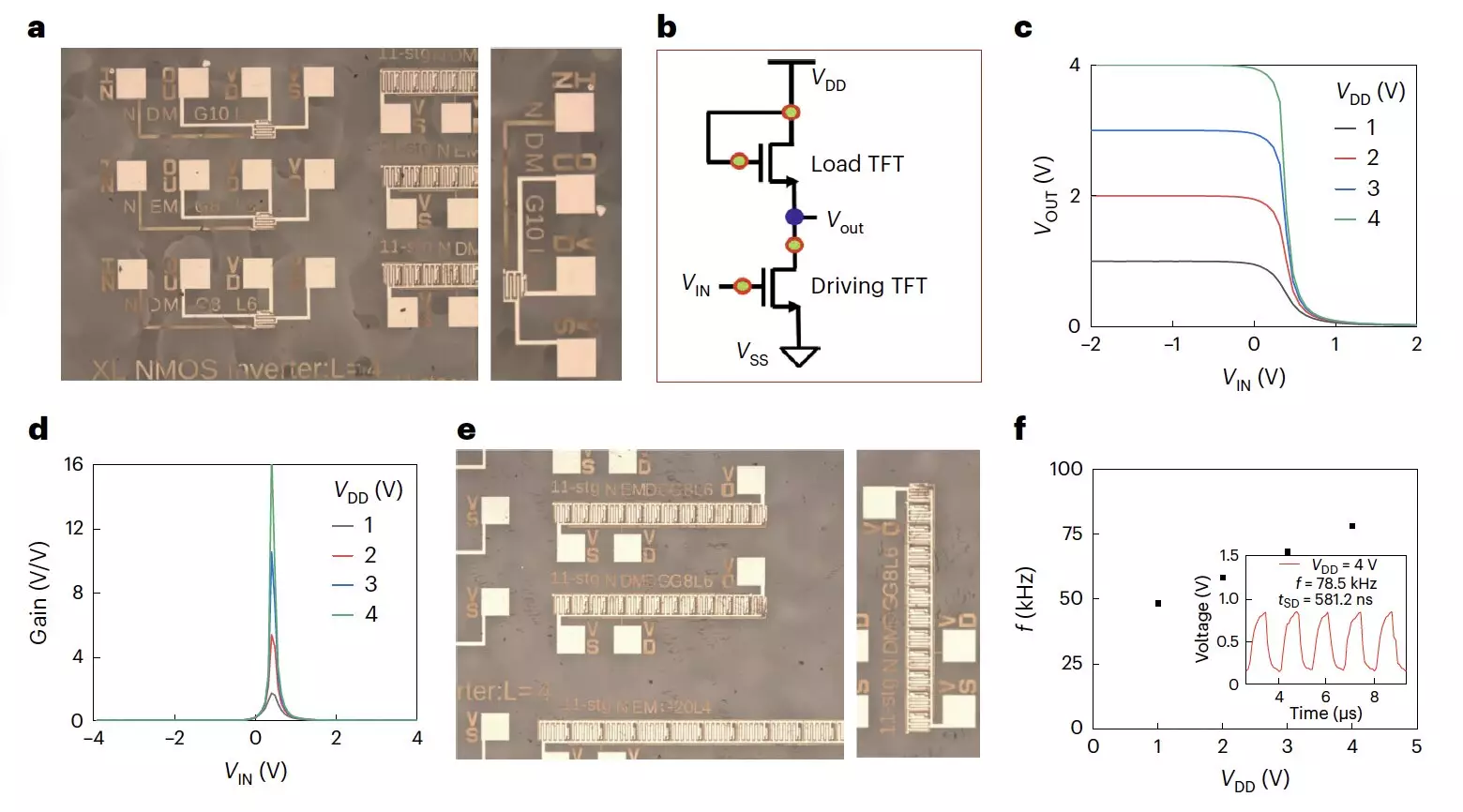Metal halide perovskites have been a topic of interest in the field of optoelectronics due to their remarkable properties. Among these materials, tin (Sn) halide perovskites have shown promise in the fabrication of p-type transistors with impressive hole mobilities exceeding 70 cm2 V-1 s-1. However, the development of n-type transistors using perovskite channels based on tin has proven challenging, limiting the potential for complementary logic circuits. In response, researchers have begun exploring alternative metal halide perovskites, such as lead halide perovskites, to address this gap in the literature.
Lead halide perovskites, while showing potential for n-type transistor applications, have been hindered by ionic defects that restrict electron mobilities to around 3-4 cm2 V-1 s-1. To overcome this limitation, a team of researchers from various institutions globally introduced a new strategy to enhance the performance of metal halide perovskite-based n-type transistors. This strategy, detailed in a recent article in Nature Electronics, involved the use of formamidinium lead iodide (FAPbI3) perovskite to achieve field-effect mobilities of up to 33 cm2 V-1 s-1.
To further improve the performance of their n-type transistors, the research team incorporated a methylammonium chloride (MACI) additive. This additive played a crucial role in regulating strain within the FAPbI3 perovskite, leading to enhanced properties. By addressing issues such as perovskite lattice strain relaxation and undercoordinated lead atoms, the team was able to stabilize the alpha phase, improve surface morphology, crystallinity, and orientation, as well as create low-defect perovskite-dielectric interfaces.
Initial tests on the n-type transistors revealed highly encouraging outcomes, including good electron mobilities, minimal hysteresis, and robust operational stability under varying bias stress conditions. These transistors were utilized to construct all-perovskite unipolar inverters and 11-stage ring oscillators, showcasing the potential for their integration into advanced electronic components. Looking ahead, the proposed fabrication strategy could pave the way for the development of cost-effective integrated circuits featuring metal halide perovskite transistors, opening up new avenues for high-performance electronics.
The advancement of metal halide perovskite-based thin-film transistors holds significant promise for the future of optoelectronic devices. By addressing the challenges associated with n-type transistor development and leveraging innovative strategies and additives, researchers are poised to unlock new opportunities for enhanced transistor performance and integration into various electronic applications. As further developments are made in this rapidly evolving field, the potential for metal halide perovskites to revolutionize the electronics industry remains a compelling prospect.


Leave a Reply